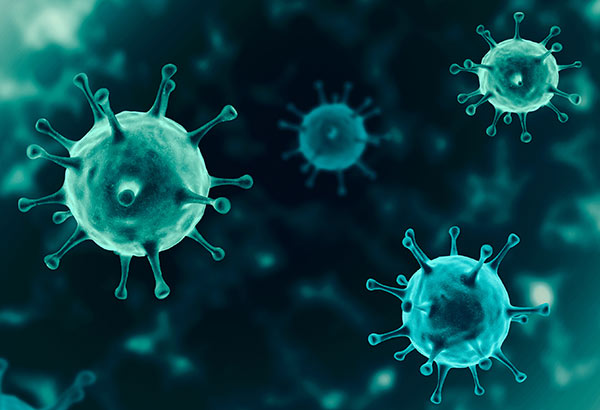The current Coronavirus (COVID-19) pandemic has made us all much more aware of what “cleaning” really means.
We all like to think that we keep our homes, offices, factories and workshops clean, but we can’t escape the fact that invisible bugs and viruses can be lurking on surfaces everywhere. Steam cleaning is something that hospitals and food production environments are very familiar with, but for the rest of us, steam cleaning might be used for an occasional “deep clean” but not necessarily on a regular basis.
In our view, regular steam cleaning is the way forward for all types of business, and here’s why:
How long does the coronavirus last on surfaces?
We aren’t medical experts, but based on what we’ve read and heard, the virus that causes COVID-19 survives on surfaces, behaves in a similar way to other coronaviruses, the studies of which suggest that the virus may remain active on surfaces for several hours, or even days.
A recent study by The New England Journal of Medicine tested how long the virus can remain stable on different kinds of surfaces within a controlled laboratory setting. They found that it was still detectable on cardboard for up to 24 hours, and on plastic and steel for up to 72 hours. The amount of the virus remaining, and therefore the risk of infection, will most likely decrease over time, but it may still be there for much longer than you would imagine.

SARS-CoV-2, the virus that causes COVID-19, appears as a microscopic spiky orb which, as has been well publicised recently, can travel through the air from person to person, hence the 2 metres social distancing rule. A cough or a sneeze can apparently cause the virus to travel several metres before it settles on a surface, then if someone touches the surface, the virus can travel to the hand, then to the face and into the body. That’s why surfaces need to be regularly sanitised.
Hand washing and disinfecting surfaces
According to recent Coronavirus news, the advice is to wash your hands thoroughly and regularly, which means at least every 2 hours, to reduce the risk of picking up and / or passing on the virus. Hand wipes and sanitisers are also popular particularly when you’re on the move, but these are quite hard to find now, particularly the alcohol based products recommended by the World Health Organisation.
There’s also a lot of emphasis on cleaning and then disinfecting down surfaces, particularly door handles, light switches and anything else that is touched regularly. Disinfectant or bleach solutions can be used here – but they have their limitations, as it’s easy to miss a bit, or be unable to clean some of the awkward areas.
Steam cleaning uses superheated dry steam delivered under pressure. It cleans and disinfects, as the high temperature of the steam kills micro-organisms lurking deep down, whilst the pressurised steam loosens surface dirt and greasy deposits, which are then pulled into the machine using vacuum suction.
Karcher, for example have demonstrated (in laboratory tests) that their machines can remove up to 99.999% of enveloped viruses such as the coronavirus or influenza. Read more here.
Steam cleaning is much better than just washing/wiping or using other conventional cleaning methods as it cleans and sanitises surfaces as well getting into crevices and other hard to reach areas.
Steam cleaning for virus and infection control
Hospitals and health care environments already understand the benefits of steam cleaning. A study by a group of NHS Hospital Trusts, lead to the publication of an SOP (standard operating procedure). Here’s an extract from the introduction:
“Cleanliness and infection control are closely linked in the public mind, however there are important distinctions to be made. Whilst cleanliness contributes to infection control, preventing infections requires more than simple cleanliness and one way of reducing this is by the use of steam cleaning.”
The study includes a definition of disinfection / decontamination i.e. “The removal of micro-organisms to a safe level, carried out using either heat or a disinfectant chemical.” It then goes on to say that “Disinfection / decontamination cannot take place on an unclean surface as organic matter will interfere with the disinfectant.” So surfaces must be cleaned before they can be disinfected.
The conclusion of the study was a recommendation to use of dry steam cleaning systems that can instantly clean and dry surfaces without leaving any unhygienic residue.
Why is steam cleaning essential for all businesses?
So, coming back to our opening comments – we all like to think we’re clean, but are we really? The current pandemic is a terrible situation for everyone but we will emerge from it eventually, hopefully wiser and better prepared should something similar happen in the future.
In our view, a key element of any business’s cleaning regime should be steam cleaning.
- Steam cleaning is effective, removing 99% of germs and bacteria
- Steam cleaning helps in the fight against superbugs and viruses
- Steam cleaning is more sustainable and environmentally friendly, offering decontamination without chemicals
The world will be changed after the pandemic and the idea of cleaning and hygiene will have a different meaning. We will have to ensure that our premises, machinery etc will have to not only look clean but also be bacteria free. The way to achieve the best results is by steam cleaning and this will have to be built into any future effective cleaning regime.
So why not start now? If you have a steam cleaner already for occasional use – dust it off and use it now, then build it into your regular cleaning plan.
If you don’t have one, think about investing in one now to future proof your premises against any bacterial threats that may occur.
References
https://www.scientificamerican.com/article/the-nation-paralyzed-by-a-pathogen-deep-cleaners-have-their-day/
https://www.nejm.org/doi/full/10.1056/NEJMc2004973
https://www.theguardian.com/us-news/2020/apr/04/how-long-does-coronavirus-live-on-different-surfaces
https://www.channel4.com/news/factcheck/factcheck-how-long-can-the-coronavirus-survive-on-surfaces-and-in-the-air
https://www.gov.uk/government/publications/covid-19-decontamination-in-non-healthcare-settings/covid-19-decontamination-in-non-healthcare-settings
https://www.bbc.co.uk/news/stories-52126847
https://www.intercleanshow.com/news/innovation/three-reasons-steam-cleaning-will-transform-healthcare-cleaning
https://www.who.int/docs/default-source/coronaviruse/getting-workplace-ready-for-covid-19.pdf
https://www.telegraph.co.uk/health-fitness/body/does-coronavirus-live-different-surfaces/

